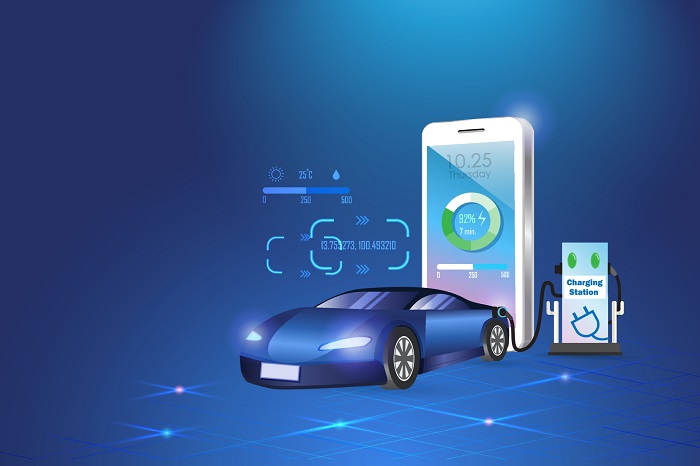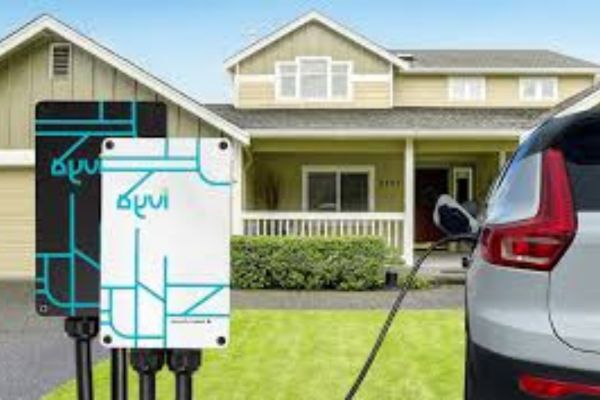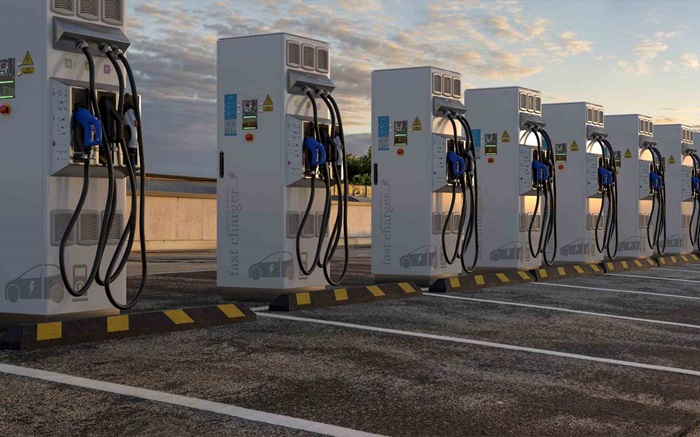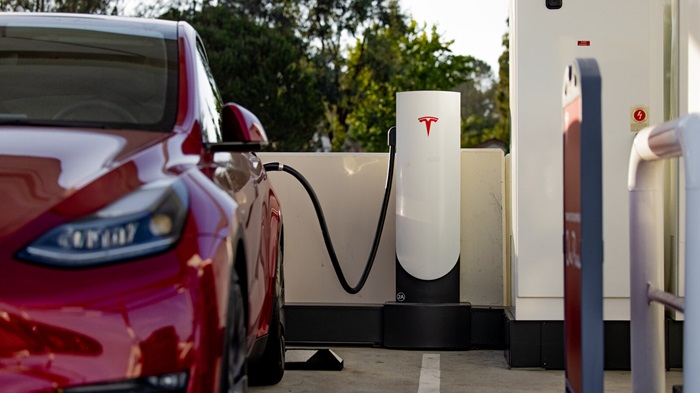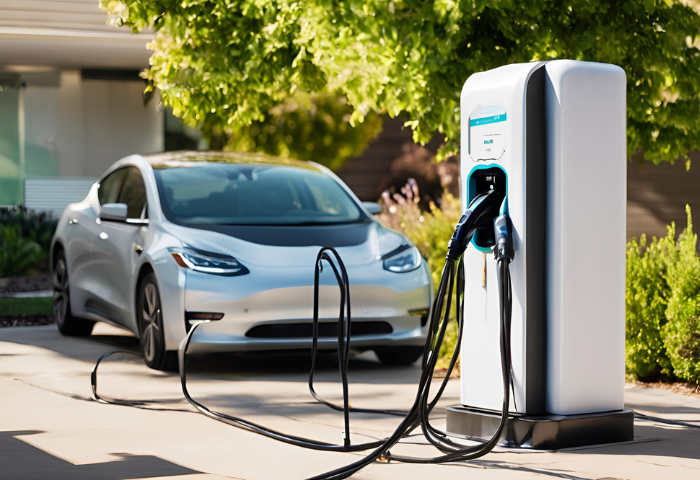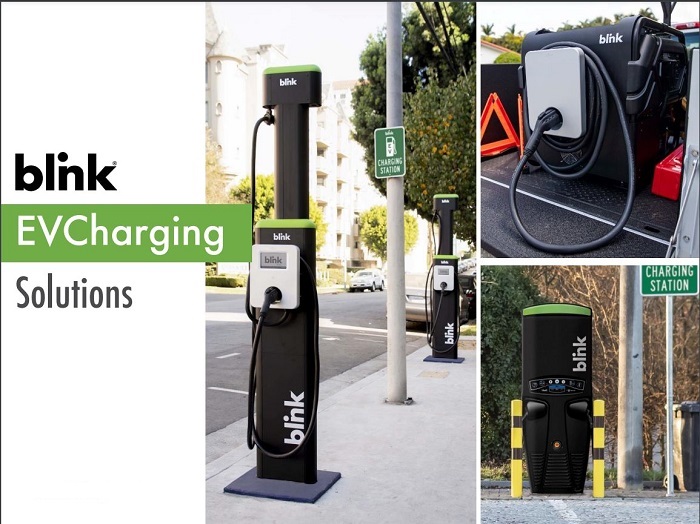EV Charging Fundamentals: A Guide for New EV Owners
The widespread adoption of electric vehicles (EVs) hinges on the development of a robust and reliable charging infrastructure. Understanding the fundamentals of EV charging is critical for both individual EV owners and those involved in charging network planning and implementation.
EV mobile charging technology
EV mobile charging technology is a developing field that aims to address the limitations of fixed charging stations and overcome range anxiety for electric vehicle owners. Here’s a breakdown of different approaches:
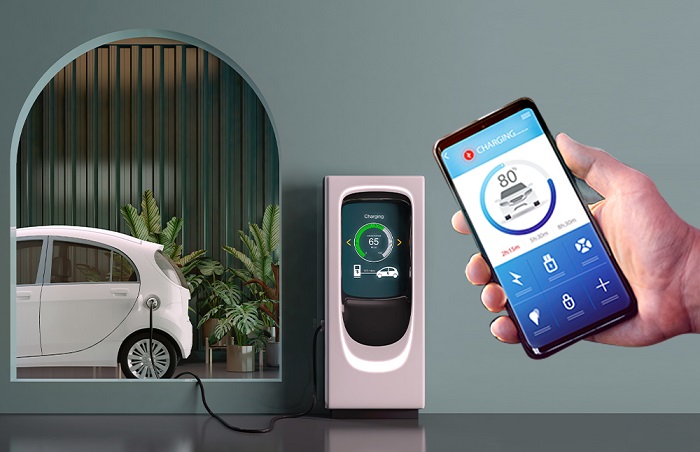
1. Portable EV Chargers
1.1. Benefits and Limitations of Portable EV Chargers
Benefits:
- Convenience and Flexibility: Drivers can use portable EV chargers anywhere they have access to an appropriate power source.
- Emergency Use: Handy in situations where a stationary charging station is not available.
- Cost-effective: Generally cheaper than installing a dedicated home charging station.
Limitations:
- Slower Charging: Typically slower than Level 2 home or public chargers, this leads to longer charging times.
- Power Source Dependence: Effectiveness depends on the availability and capacity of the power source.
- Limited Range: May not fully charge an EV’s battery, limiting use for long-distance travel.
1.2. Key Features and Options
- Power Output: Varies from 1.4 kW (Level 1) to 7.2 kW (Level 2).
- Plug Types: Compatibility with different plug types, such as J1772 for North America or Type 2 for Europe.
- Portability: Lightweight and compact designs for easy transport and storage.
- Smart Features: Some models include app connectivity for remote monitoring and control.
1.3. Leading Brands and Models
- Tesla Mobile Connector: Offers up to 32A charging with a variety of adapters for different outlets.
- ChargePoint Home Flex: Offers flexible amperage settings up to 50A, as well as smart app integration.
- JuiceBox 40: A portable option with WiFi connectivity, adjustable power levels, and integration with home energy systems.
2. Wireless (inductive) charging
2.1. How It Worked
Wireless charging, or inductive charging, transfers energy between a charging pad on the ground and a receiver on the vehicle through electromagnetic fields. The primary components are:
- Primary Coil: Embedded in the ground or pad, connected to the power supply.
- Secondary Coil: Installed in the EV, it receives the electromagnetic field and converts it to electricity to charge the battery.
2.2. Current Technologies and Research
- WiTricity: is leading the development of wireless charging technology with efficient power transfer systems.
- Plugless Power: Offers aftermarket wireless charging systems for specific EV models.
- Research Initiatives: Ongoing studies focus on increasing efficiency, reducing costs, and integrating wireless charging into public infrastructure.
2.3. Advantages and Challenges
Advantages:
- Convenience: No physical plugging or unplugging is required, enhancing the user experience.
- Aesthetic Integration: Easily incorporated into parking spaces and garages.
- Safety: reduces the risks associated with exposed electrical connectors.
Challenges:
- Efficiency Losses: Currently less efficient than wired charging, leading to longer charging times.
- Cost: Higher initial setup costs compared to traditional charging stations.
- Standardization: Lack of universal standards complicates compatibility across different EV models.
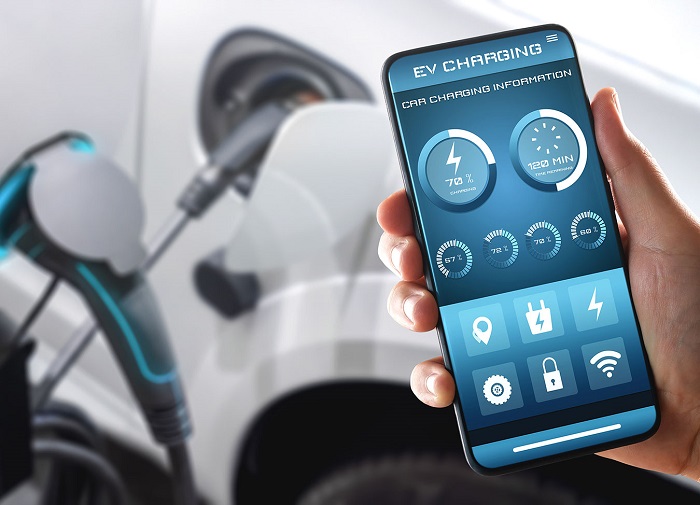
3. Solar-Powered Mobile Chargers
3.1. Integration with EVs
- Onboard Solar Panels: To provide auxiliary power, some experimental EVs have solar panels mounted on their surfaces.
- External Solar Chargers: To charge EVs, portable solar panel systems typically require a storage battery to manage energy flow.
3.2. Feasibility and Efficiency
- Current Limitations: The vehicle’s available surface area and panel efficiency limit direct solar charging.
- Supplementary Use: This is most practical as a supplementary charging option rather than the primary source of power.
3.3. Solar Charging Stations
- Stationary Solar Chargers: These are fixed installations that use solar panels to generate electricity, store it in batteries or feed it into the grid, and then charge EVs.
- Mobile Solar Chargers: Deployable units that can be transported to different locations, useful for events or in remote areas without grid access.
4. Smart Charging Solutions
4.1. Smartphone Apps for EV Charging
- Functionality: Apps allow users to locate charging stations, monitor charging status, schedule charging times, and manage payments.
- Examples: Apps like ChargePoint, PlugShare, and Tesla’s app provide comprehensive charging management features.
4.2. Integration with Home Energy Management
- Smart Home Systems: EV chargers integrated with home energy management systems (HEMS) optimize charging based on electricity rates and household energy usage.
- Renewable Energy Integration: systems that prioritize charging when renewable energy is available (e.g., from home solar panels).
4.3. Real-time Charging Data and Control
- Monitoring: Real-time data on charging status, energy consumption, and cost.
- Remote Control: The ability to start, stop, and schedule charging sessions from anywhere.
- Optimization: Systems that dynamically adjust charging rates based on grid demand and pricing, enhancing efficiency and cost savings.
Infrastructure for EV Mobile Charging
EV charging infrastructure is crucial for widespread electric vehicle adoption. Here’s a breakdown of the different charging options available to EV owners:
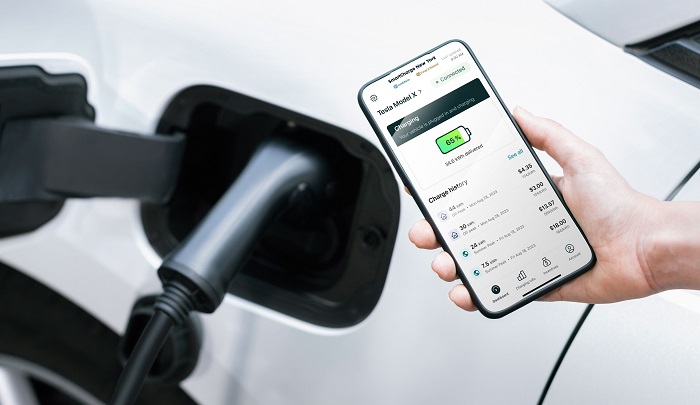
1. Public Charging Networks
Coverage and accessibility
- Coverage: Public charging networks are expanding rapidly, with stations located at various sites, including shopping centers, highway rest stops, and urban areas. Companies like ChargePoint, Tesla Supercharger, and Electrify America have significant networks in North America and Europe.
- Accessibility: The ease of access to charging stations varies depending on location, with urban areas typically having a higher density of chargers compared to rural areas. Apps that assist drivers in locating and navigating to nearby charging stations also enhance accessibility.
Pricing Models and Subscription Plans
- Pay-per-use: Drivers pay based on the amount of electricity consumed (per kWh), the duration of charging, or a combination of both.
- Subscription Plans: Some networks offer subscription models that provide reduced rates or unlimited charging for a fixed monthly fee. Examples include ChargePoint’s subscription plans and Tesla’s membership options.
- Free Charging: Some businesses and municipalities offer free charging to attract customers or promote green initiatives, though these are less common.
Challenges in Rural and Urban Areas
- Rural Areas: Limited infrastructure, higher installation costs, and lower utilization rates make it challenging to establish extensive charging networks in rural areas.
- Urban Areas: Space constraints, high land costs, and grid capacity issues are significant challenges in densely populated urban centers. Additionally, urban charging stations must cater to a higher volume of users.
2. Home Charging Infrastructure
Installation Process
- Assessment: A professional electrician assesses the home’s electrical system to determine if it can support an EV charger.
- Equipment Selection: Choosing between Level 1 (standard household outlet) and Level 2 chargers (240V outlet) based on charging speed needs.
- Installation: This includes wiring, mounting the charger, and possibly upgrading the home’s electrical panel.
Cost and Government Incentives
- Cost: The cost of installing a Level 2 charger ranges from $500 to $2,500, depending on the existing electrical setup and charger model.
- Incentives: Many governments offer incentives such as tax credits, rebates, or grants to offset the cost of purchasing and installing home chargers. For instance, the U.S. federal tax credit covers 30% of the cost of EV charger installation, up to $1,000.
Grid Impact and Solutions
- Impact: Increased home charging can strain local electrical grids, especially during peak hours.
- Solutions: Time-of-use pricing encourages off-peak charging and smart chargers that manage charging schedules to balance grid load. Home energy management systems (HEMS) can also integrate EV charging with solar panels and home batteries to optimize energy use.
3. Workplace Charging
Benefits for Employers and Employees
- Employers: Offering workplace charging can enhance employee satisfaction, attract and retain talent, and demonstrate a commitment to sustainability. It can also provide opportunities for green branding.
- Employees: Convenient charging during work hours, reducing the need for home or public charging. This can save time and reduce range anxiety.
Implementation Strategies
- Assess Demand: Conduct a survey of employees to gauge interest and potential usage.
- Plan Infrastructure: Determine the number of chargers needed, ideal locations, and electrical capacity.
- Incentivize Use: Offer free or discounted charging; prioritize EV-driving employees for prime parking spots.
- Monitor and Manage: Use software to monitor usage, manage energy loads, and potentially integrate with the building’s energy management system.
Case Studies and Success Stories
- Google: Provides free EV charging for employees, with over 1,000 chargers available on its Mountain View campus, contributing to high employee satisfaction and sustainability goals.
- Cisco Systems: Offers workplace charging and integrates it with their energy management system, optimizing energy use and demonstrating corporate responsibility.
4. Charging at Multi-Unit Dwellings
Solutions for Apartments and Condos
- Dedicated EV Parking: Allocating specific parking spaces equipped with EV chargers.
- Shared Charging Stations: Installing communal chargers that residents can use on a first-come, first-served basis.
- Smart Chargers: Use chargers that can manage multiple users and schedule charging sessions efficiently.
Ownership and billing models
- Owner-Pays: Residents pay for the installation and maintenance of chargers in their designated parking spots.
- HOA-Pays: The Homeowners Association (HOA) funds the installation and includes the costs in monthly maintenance fees.
- Third-Party Management: External companies install and manage the chargers, directly billing users for the electricity they consume.
Policy and management challenges
- Legal and Regulatory: Navigating local regulations, building codes, and property rights to install chargers.
- Funding: Securing funding for installation and maintenance, often requiring collective agreement among residents or the HOA.
- Coordination: Managing multiple stakeholders, including residents, property managers, electricians, and utility companies, to ensure successful implementation and operation.
User Experience in EV Charging
A seamless and positive user experience is critical for widespread EV adoption. We can improve various aspects to enhance the convenience and user-friendliness of EV charging.
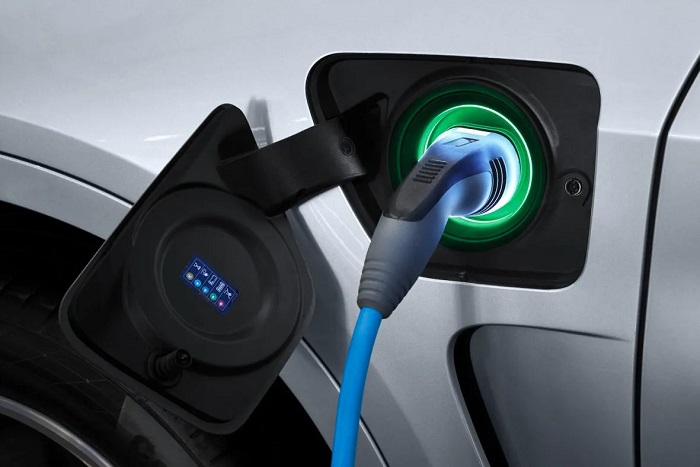
1. Queue management and reservation systems
Reducing Waiting Times
- Real-Time Availability: Many charging networks provide real-time information on charger availability through their apps or websites. This helps drivers find available chargers quickly.
- Dynamic Pricing: Implementing dynamic pricing can encourage users to charge during off-peak times, reducing congestion during peak hours.
- Load Management: Smart chargers can distribute available power among multiple vehicles, reducing wait times by allowing partial charging when demand is high.
Apps and Technologies for Slot Booking
- Reservation Systems: Some networks, like ChargePoint, allow users to reserve charging slots in advance, ensuring that a charger will be available when they arrive.
- Queue Management: Apps can manage virtual queues, notifying users when a charger is about to become available and providing estimated wait times.
- Integrated Platforms: Comprehensive apps that combine booking, payment, and real-time status updates streamline the process and enhance user convenience.
2. Payment Systems for EV Charging
RFID, Credit Cards, and Mobile Payments
- RFID Cards: Many networks issue RFID cards that users can swipe to start charging. Networks like ChargePoint and EVGo commonly use this method.
- Credit Cards: Public charging stations often accept major credit cards, providing a familiar payment method for users.
- Mobile Payments: PlugShare and network-specific apps allow users to pay directly from their smartphones, integrating with digital wallets like Apple Pay and Google Pay.
Subscription vs. Pay-per-Use Models
- Subscription Models: Provide users with unlimited or discounted monthly charges. This model is used by networks like Blink and EVgo.
- Pay-per-Use: Users pay for each charging session based on the duration or amount of electricity consumed. This is a flexible option for infrequent users.
- Hybrid Models: Some networks offer a combination, providing lower per-session rates for subscribers while allowing occasional users to pay per use.
Security Concerns and Solutions
- Data Encryption: Ensuring that payment data is encrypted both in transit and at rest to prevent unauthorized access.
- Secure Authentication: Using two-factor authentication (2FA) and strong password policies for user accounts.
- Regular Audits: Conducting regular security audits and compliance checks to identify and address vulnerabilities.
3. Customer Support and Maintenance
Troubleshooting Common Issues
- Guides and FAQs: Providing comprehensive guides and FAQs on common issues like connection errors, payment problems, and account management.
- Remote Diagnostics: Some charging networks offer remote diagnostics and support to quickly resolve technical issues.
- On-Site Assistance: Employing technicians for on-site maintenance and support when remote resolution isn’t possible.
24/7 Customer Service
- Hotlines: Offering 24/7 customer service hotlines to assist users with urgent issues at any time.
- Chat Support: Providing live chat support through apps and websites for immediate assistance.
- Multilingual Support: Offering support in multiple languages to cater to diverse user bases.
User Education and Training
- Workshops and Webinars: Hosting educational sessions on EV charging, optimal usage, and maintenance.
- Instructional Videos: Creating easy-to-follow video tutorials on how to use charging stations, apps, and manage accounts.
- In-App Tips: Integrating tips and tutorials within apps to guide users through various features and best practices.
4. Enhancing User Convenience
Location-Based Services for Charger Finding
- Mapping Apps: Utilizing GPS and mapping services to help users find the nearest available chargers. Apps like Google Maps and Waze have integrated EV charger locations.
- Route Planning: Providing route planning features that incorporate charging stops based on the vehicle’s current battery level and destination.
- Real-Time Updates: Offering real-time updates on charger status, availability, and estimated wait times.
Integrating EV Charging with Other Services
- Amenities Information: Displaying nearby amenities such as restaurants, coffee shops, and restrooms to enhance the charging experience.
- Discounts and Offers: Partnering with local businesses to offer discounts or promotions to EV users while they charge their vehicles.
- Multi-Modal Integration: Integrating EV charging with other transportation services like car-sharing, public transit, and bike rentals for a seamless travel experience.
Feedback Systems and Community Engagement
- User Reviews: Allowing users to rate and review charging stations, providing valuable feedback for others.
- Surveys and Polls: Regularly conducting surveys and polls to gather user feedback and identify areas for improvement.
- Community Forums: Creating online forums or social media groups for users to share experiences, tips, and support each other in using EV charging infrastructure.
Enhancing the user experience in EV charging involves implementing efficient queue management and reservation systems, offering diverse and secure payment options, providing robust customer support and education, and integrating convenient services and community engagement. These measures not only improve user satisfaction but also promote the widespread adoption of electric vehicles.
Sustainability and EV Charging: Renewable Energy Integration
The widespread adoption of EVs presents a unique opportunity to create a sustainable transportation system. Integrating renewable energy sources like solar and wind into EV charging infrastructure can significantly reduce the carbon footprint of electric vehicles. Here’s a look at how it works and the challenges involved.

Grid Balancing with Renewable Sources
Renewable energy sources are variable by nature. Solar panels produce electricity during daylight hours, and wind turbines rely on wind speed. This variability can create challenges for maintaining grid stability. Integrating EVs can help address this issue in two ways:
- Demand Flexibility: EV batteries can act as distributed energy storage units. EVs can receive charging during periods of high renewable energy production. Conversely, during periods of low renewable energy output, EVs can potentially feed power back to the grid (vehicle-to-grid technology) to help meet demand.
- Time-of-Day Charging: Smart charging strategies can encourage EV owners to charge their vehicles during off-peak hours, when renewable energy production is high and grid demand is low. This helps to utilize renewable energy more efficiently and reduce reliance on fossil fuel-based power plants.
Vehicle-to-Grid (V2G) Technologies
V2G technology allows EVs to act as mobile power sources, providing electricity back to the grid during peak demand periods. This two-way flow of energy can contribute to grid stability and increase the utilization of renewable energy sources.
Benefits:
- Grid Stability: V2G can help balance supply and demand on the grid, reducing the need for additional power plants.
- Economic Incentives: EV owners can potentially earn revenue by selling electricity back to the grid.
- Increased Renewable Integration: V2G can facilitate the integration of more renewable energy sources into the grid.
Challenges:
- Technical Infrastructure: V2G requires bi-directional charging equipment and communication protocols between EVs and the grid.
- Battery Degradation: Frequent use of V2G could potentially accelerate battery degradation in EVs.
- Consumer Behavior: Resolving consumer concerns regarding battery health and offering financial incentives are necessary to promote the broad adoption of V2G.
Despite these challenges, the potential benefits of a sustainable EV charging ecosystem powered by renewable energy make it a worthwhile pursuit. Technological advancements, policy initiatives, and consumer behavior changes can pave the way for a greener future of transportation.
Understanding the fundamentals of EV charging is essential for both EV owners and stakeholders involved in the transition to electric mobility. By addressing the challenges and opportunities associated with EV charging, we can pave the way for a more sustainable and electrified future.

Henry Michael is a leading expert in EV charging station research, specializing in innovative solutions for electric vehicle infrastructure. With a passion for sustainability and technological advancement, he is dedicated to advancing the accessibility and efficiency of EV charging worldwide.

